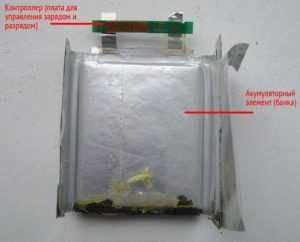How to Charge a Lithium Screwdriver Battery
A person in modern life is surrounded by many electronic assistants. In everyday life, we use tablets, mobile phones, laptops, etc. At work, we use screwdrivers, portable drills, flashlights, a power bank and start-up batteries for a car. All of these devices use different types of batteries. But most common lithium ion batteries. They have become popular due to their small size and weight combined with high energy intensity. At a reasonable cost, they have a decent life (300-400 charge-discharge cycles). Since these batteries are widely used in different devices that surround us, you need to understand how to properly charge them. Therefore, today’s material is devoted to charging Li─Ion batteries.
What is a lithium-ion battery?
Since many users have a vague idea of what a lithium-ion battery is, let’s say a few words about its device. If you look at the example of the battery of a mobile phone, then the battery there has the following design.

Lithium Ion Battery Design
The battery of a mobile phone in most cases has in its design one battery cell, which is often called a bank. The rated voltage of the can is usually 3.7 volts. In laptop batteries, such elements can be from 2 to 12. But there they are not rectangular, but cylindrical (type 18650). The battery also has a controller, which is a board with a control chip soldered to it. It controls the process of charge and discharge of the can, preventing its overcharging or deep discharge.
Thus, battery manufacturers have already taken care to avoid emergency situations when charging and discharging the battery. And the user can only follow some operating rules, which will be discussed below.If you are interested, you can read the detailed material about the lithium-ion battery in the article here.
How to charge a lithium-ion battery?
When charging a Li─Ion battery, you need to remember that it is best to maintain a battery charge of 20–80% of the full capacity. Lithium-ion batteries do not like recharge. As mentioned above, the controller controls the degree of charge of the battery cell or cells, if there are several. He will not allow them to recharge. But this does not mean that the battery can be kept charging for days. This is completely useless.
Phone and Charger
In any case, the controller does not allow overcharging and deep discharge of the can. He simply disconnects the can from the outside world. In addition, many lithium ion batteries have built-in overheat protection.
Now we list several options for charging a Li─Ion battery.
- Regular charger. This is the best and recommended option. Using standard charging, it is recommended to charge the Li─Ion battery. It is safe and as fast as possible;
- From the computer’s USB port. The option is also safe, but quite durable. The fact is that in the case of the USB port, the current is limited to 0.5 amperes;
- From the cigarette lighter in the car. If this is a standard USB adapter, the process may also take a long time. But now there are quite a few devices on sale that have a set of USB ports with different amperage. There are even models that allow you to charge laptop batteries with a nominal voltage of 19 volts with a current of 4 amperes. You can find out the maximum allowable current for charging the battery of your device from the documentation or look at the standard charge. For battery smartphones usually 1, and for tablets. 2 amperes;
- “Frog”. So called universal chargers. They are commonly used to charge lithium batteries for mobile phones. One such “frog” is shown in the illustration below. The design includes a dock for installing batteries and contacts, adjustable in width for various models. To inform about the end of charging there is an LED indication.